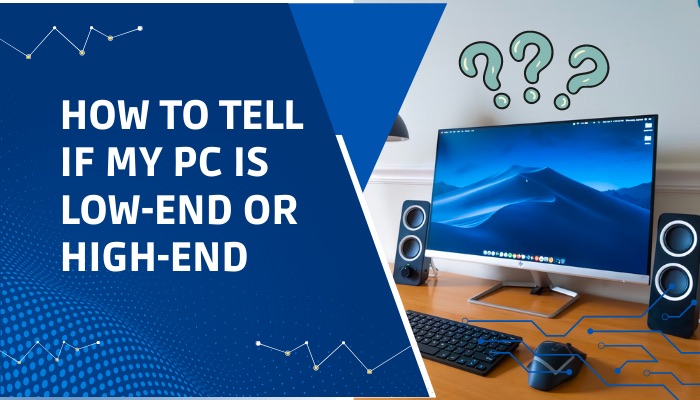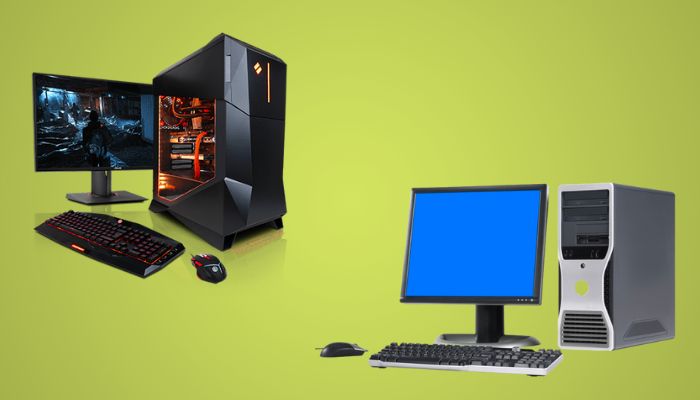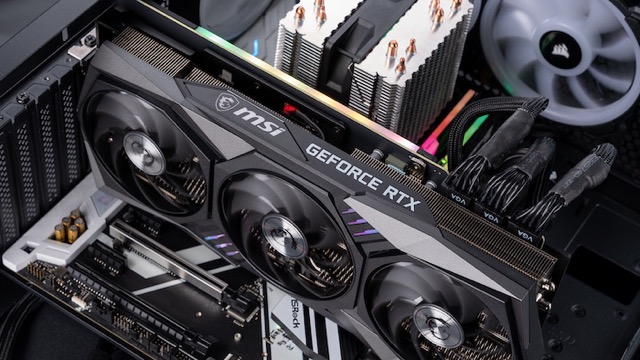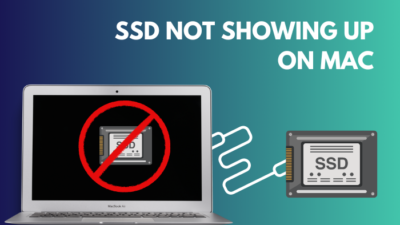To determine whether a PC is high-end or low-end, you have to know the specification details and the intended purpose of that PC.
You often buy a computer that suits your personal computing needs, but that hardware might not be suitable for heavy work, i.e., simulations, 3D modelling, etc.

In this article, I am about to discuss the essential specifications and features that distinguish a high-end PC from a low-end one.
Keep reading till the end to find out whether your PC is a high-end one.
What is a low-end or high-end PC?
In most cases, low-end PCs feature less than 4 GB of RAM, no dedicated GPUs, passive cooling (usually just one fan) and a low capacity and RPM hard disk. You can use them at home or the office, but don’t ask for too much performance from them.
Instead, high-end PCs are extremely powerful but also incredibly expensive. Most often, these are high-end gaming PCs with at least one 1TB hard drive, two M.2 SSDs and 32GB of RAM, multiple dedicated graphics cards, an ultra-fast CPU and an enormous power supply.
A fun fact: a high-end PC that has been used for a few years becomes a low-end PC.
Five years is not a long time in the context of human life, but it is a considerable amount of time for computers.

You can take an extremely powerful PC that runs the latest AAA games at 4K with 60+ FPS and put it in a time capsule for five years. But, unfortunately, your PC won’t operate as smooth as it was five years ago.
A low-end PC is a PC that is designed to be inexpensive and hence features lower-quality components.
Low-end PCs are designed to perform routine chores like web browsing and office work, but they struggle miserably when confronted with tasks that need significant processing power from the CPU or GPU.
Low-end PCs can’t play today’s most popular games and may even require games that are a few years old to operate at their lowest settings to be played.
A Ryzen 3 or i3 processor, 8 GB of RAM, and a cheap graphics card are typical components of a low-end PC. Low-end PC gaming can be done, but it’s usually not a fun experience.
Related contents you should read about how many Hard Drives can a PC Have?
How to tell whether my PC is low-end or high-end?
Determining whether your PC is low-end or high end depends on a lot of factors. You can have a powerful CPU, but your system might not include a GPU, which would make your system perform lower.
Here are some things that you should note while determining whether a PC is low or high-end:
1. Check the CPU features
To determine whether your PC is high-end or not, first check the CPU model, generation, etc. You should remember that different processors are best for doing different things. Thus, you should avoid comparing your desktop CPU to server CPUs.

You should look for these specifications while checking the CPU:
Number of cores
As multi-core processors have become more widely available and software has been developed to use this technology, they have become more prevalent in this modern era of personal computing.
Splitting a processor’s workload among multiple cores becomes more accessible with each new core added. As a result, the processor runs more quickly and effectively.
On the other hand, a processor can only do as good as the program that runs on it currently. Using only two of the eight cores means that five cores are going to be underused by the software.
You should compare single core performance benchmarks of CPUs to understand which CPU is more powerful.
A wide range of CPUs is available in the consumer market, from dual-core sloppy machines to 64-core monsters.
Your computer is likely to be high-end if the number of your CPU cores is eight or higher.
Cache memory size
The cache of a CPU is a small amount of high-speed memory utilized for temporary storage. This enables a computer to swiftly access repeatedly used system files from the processor’s cache. The bigger the CPU cache, the more files it can store for speedy retrieval.
Currently, AMD uses an architecture where the cache memory is not only bigger, but also distributed, allowing faster access of information to the processing cores.
If your CPU has a large cache memory, it is possibly high-end hardware.
Related guide about Is it Bad to Leave Your PC On Overnight?
Integrated Graphics Processing Unit
Many of today’s processors have integrated graphics processing units explicitly built to carry out the computations associated with graphical displays.
Even if a computer’s processor does not have a GPU incorporated, it should still be able to display graphics if either a separate graphics card is installed or an onboard video facility is available on the motherboard.
A CPU-integrated GPU will probably not deliver the required level of performance if the computer is utilized for graphics-intensive software and programs.
Clock speed
The speed at which a CPU operates is measured in hertz (Hz). It used to be that just having a quicker clock speed meant better performance. But due to the architecture of a CPU, a CPU with a lower clock speed might perform better than a CPU with a higher clock speed.
A CPU’s instructions per clock should also be considered in addition to its frequency. However, when it comes to the actual speed of the CPU, frequency is no longer the sole criterion to consider.
Some more guides on how many Graphics Cards can a PC have?
Model and Generation
Always check for the model and generation of your CPU. Most likely, your PC will be occupied by a Ryzen or Intel CPU, both of which offer CPU solutions for different price ranges.
Information about processor generation can help you to determine the actual age of the processing unit.
If your CPU is core i7 or above and is a seventh generation or later product, it can be considered high-end hardware.
Also related to this guide is building a PC Hard as People Say?
2. Go through the GPU specifications
Modern GPUs excel in processing enormous amounts of picture data in parallel, allowing them to show text and graphics in windowed GUIs as quickly as possible while still processing the sophisticated 3D graphics required for modern gaming experiences.
Aside from gaming, GPUs can also be used for various tasks involving large amounts of data manipulation in parallel, making them handy in multiple settings.

Moreover, people who use their PCs for 3D rendering, game creation, or video editing will also notice a performance boost from a faster GPU. Using a GPU in high-end apps like AutoCAD and Adobe Premiere Pro can speed up computations and improve workflows.
Here are some features that you should look for in a high-end GPU:
Ray-tracing
Ray tracing figures out the colour of each pixel by following the path that light would take from the viewer’s eye through the virtual 3D scene.
As light moves through a scene, it can bounce off of one object and hit another, making reflections, or it can be blocked by objects, projecting shadows, or it can pass through clear or almost transparent objects (causing refractions). All of these things happen together to make the final colour of a pixel, which is then shown on the screen.
Ray tracing is supported by most of the top-of-the-line GPUs from AMD and NVIDIA today, and it will continue to become more common with each new generation of graphics cards.
Upscaling technology
Modern GPUs have technology that can use upscaling to improve gaming performance by a considerable amount. Simply put, the technology renders each frame at a lower resolution and then scales it up to the resolution set in the game.
During the upscaling process, there are ways to ensure that the image keeps as much of its quality as possible. The technology speeds up the rendering process while still giving a good image.
If you have both features in your GPU, your GPU is undoubtedly a high-end product.
3. Acquire information regarding the storage drive
You should know about the type of storage drives used in the PC. Most high-end PCs would use SSDs as their storage device. Mid-range computers usually use a combination of SSDs and HDDs as their storage drive.

It can be considered high-end if your computer has an NVME M.2 PCIe SSD storage.
4. Inquire about RAM size, speed and frequency
For a very long time, upgrading the RAM was the most common way to make your PC run faster. RAM is the part of your computer that keeps track of what it is working on right now.

When your PC doesn’t have enough RAM, it has to store the information it needs right now somewhere else, which can slow down your work and load times by a lot. This is especially noticeable in projects that use much computing power, like video encoding and making high-quality art.
Remember that currently, a DDR4 generation RAM with a capacity of at least 16GB can be considered high-end.
Also read, how to fix PC Crashes while Gaming?
5. Check the motherboard specifications
The motherboard is the hub of all PC components where all of them get connected to each other. Therefore, determining whether your motherboard is high-end or not is very easy.

First, check for the number of peripheral I/O ports, as most modern systems include a handful of peripheral devices.
Also, look for PCI express connections, data bus speed, etc., to determine the worth of your PC.
6. Run task-specific benchmarking software
If we’re talking about a high-end gaming computer, set the graphics preset to Ultra and run an in-game benchmark. On the other hand, if the computer is intended for productivity, run Cinebench to determine both single and multiple core performance.
No matter what game you play, if you have a 1080p monitor with a high-end PC setup, you should get close to or above 100 FPS.
A low-end PC will have trouble with the benchmark. At the Ultra setting, it will give less than 30 FPS.
To know whether the machine is low-end or high-end, you can obtain the benchmarking result to compare it to other PCs in a similar price range.
Conclusion
A low-end PC is made to be inexpensive and has parts that might not be as good performing. On the other hand, high-end computers are very powerful but also costly.
If your computer is a device consisting of an i3 or lower Pentium CPU with integrated GPU, 4GB RAM and HDD storage, it can be considered a low-end machine. Consequently, a PC with i7 or above, with 16GB or more RAM and SSD storage, would be a high-end setup.
So, can you now determine how to tell whether your PC is high-end or not?



